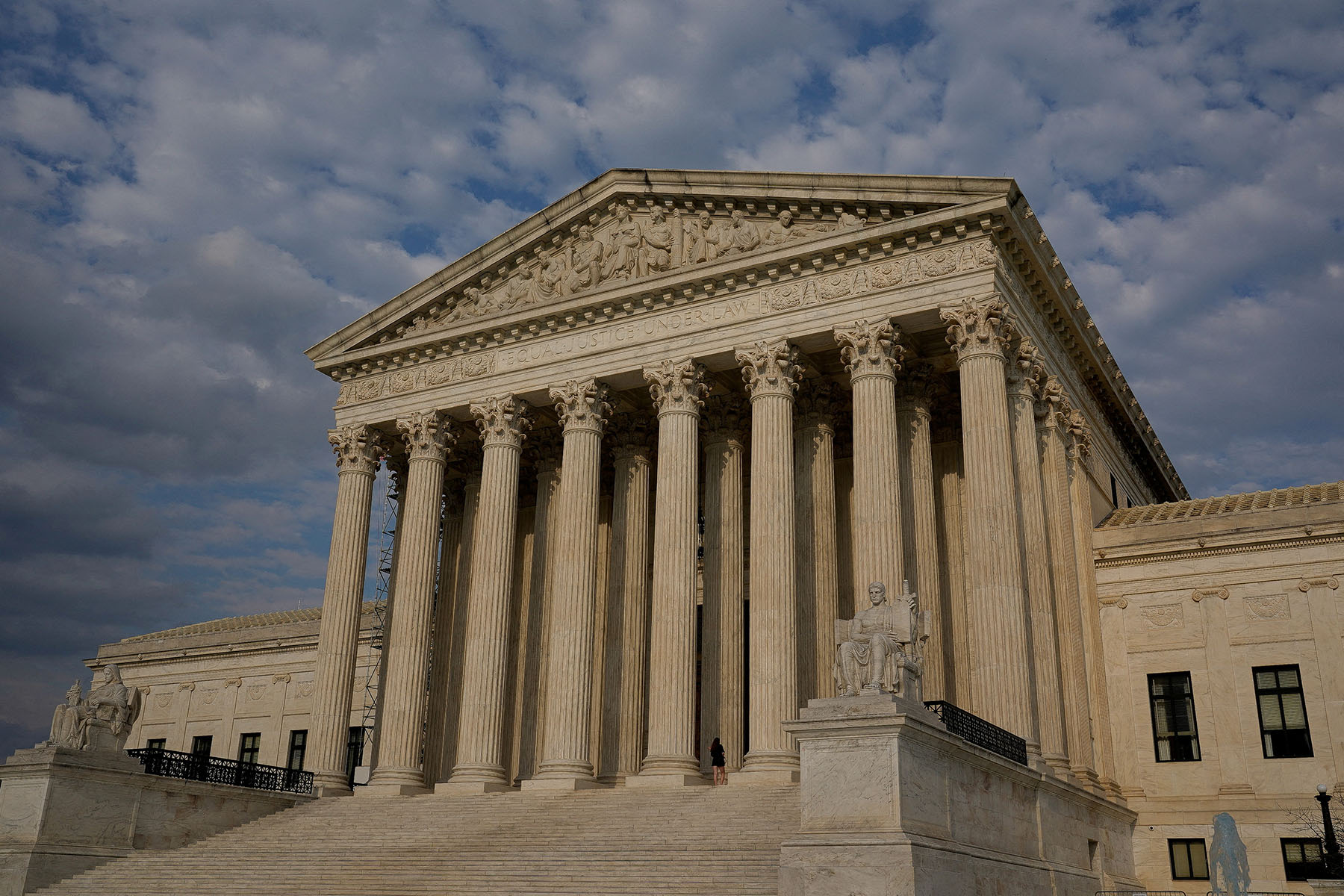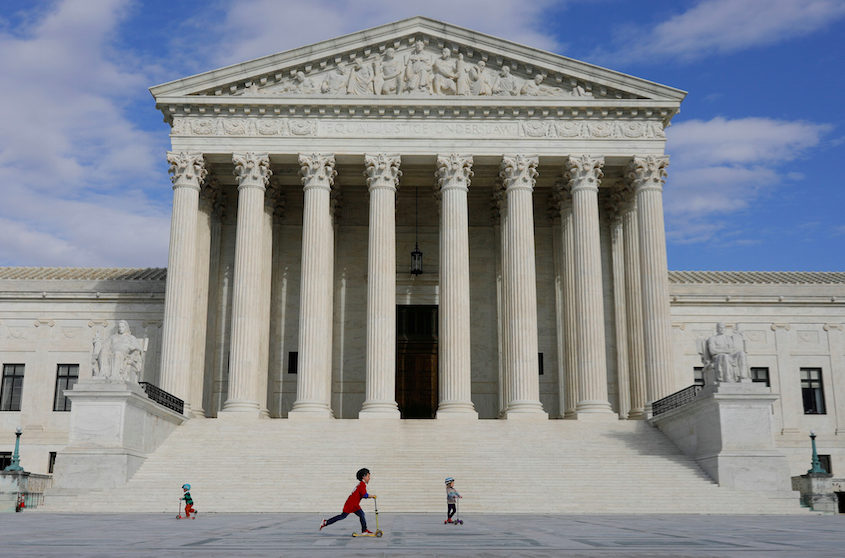The Supreme Court heard oral arguments April 19 in Counterman v. Colorado, a case that questions whether intent is necessary to constitute a “true threat” — a category of speech that is unprotected by the First Amendment.
Billy Raymond Counterman sent thousands of Facebook messages to Colorado musician Coles Whalen from 2014 to 2016. The messages frightened Whalen, as one told her to “F*ck off permanently” and another read “You’re not being good for human relations. Die. Don’t need you.” Despite being blocked by Whalen between “four and eight times,” according to court records, Counterman created separate accounts under different names to continue the online harassment.
“I’m currently unsupervised. I know, it freaks me out too, but the possibilities are endless,” another message read. Others suggested Counterman was watching Whalen, as one asked if she was in a white Jeep, and another read: “Five years on Facebook. Only a couple physical sightings.”
In 2016, Counterman was arrested and convicted under a Colorado anti-stalking law for 17 of his messages to Whalen, and in 2017 was sentenced to four and a half years in prison. Counterman argued at his criminal trial that despite the contents of his messages he didn’t intend to cause Whalen emotional distress, but said he was mentally ill. But in Colorado’s brief, it states that “Counterman neither asserted an insanity defense nor timely moved to introduce expert evidence of any mental health condition.”
Counterman appealed his conviction, but the Colorado Court of Appeals affirmed it in July 2021 and held that Counterman’s messages were true threats.
The question before the court in Counterman is “Whether, to establish that a statement is a ‘true threat’ unprotected by the First Amendment, the government must show that the speaker subjectively knew or intended the threatening nature of the statement, or whether it is enough to show that an objective ‘reasonable person’ would regard the statement as a threat of violence.”
In Colorado’s brief, its attorneys note that Counterman’s harassment of Whalen was harmful as it made “her fear for her safety and disrupt[ed] her life … And threats cause these harms no matter what the person making the threat intends.”
Justice Elena Kagan seemed to agree with Colorado, and said receiving two years of messages from an unknown sender after blocking multiple accounts, is “objectively terrifying.”
But Justice Brett Kavanaugh noted that Colorado’s argument, which claims that the harm caused by threats doesn’t depend on the intent of the speaker, could ultimately lead to limited prosecutions in cases where someone may threaten the president, for example.
“A defense like the one that would be present with your mens rea would make it too easy for someone to say, ‘oh, I was just joking, I was just kidding,’ and, therefore, threats that would be really quite dangerous in terms of leading to the next step of actually carrying through with the threat will not be addressed. How do you respond to that concern?” Justice Kavanaugh asked.
“True threats” are statements in which a speaker communicates an intent to commit an act of violence to a particular individual or a group of individuals. In cases involving true threats, the speaker intends to frighten individuals enough to fear for their safety.
One landmark case that examines this legal principle is Virginia v. Black (2003), in which a cross was burned in front of a Black family’s home, an act which violated a Virginia law that made it illegal to burn a cross with intent to intimidate any person. The court held that speech becomes unprotected intimidation when it is “a type of true threat, where a speaker directs a threat to a person or group of persons with the intent of placing the victim in fear of bodily harm or death.”
These definitions place emphasis on actual intent and severity of the threat, and allows authorities to take seriously a situation like a bomb threat while also keeping the government from punishing clearly hyperbolic expression.
Teacher Guide: Hate Speech in America
Years later, the Supreme Court returned to the question of true threats in Elonis v. United States (2015), in which Anthony Elonis allegedly threatened his ex-wife using words from a rap song. The court reversed his conviction in an 8-1 decision, finding that a person cannot be convicted of committing a true threat for merely uttering statements others might perceive as threatening. Chief Justice John Roberts wrote for the majority, “Wrongdoing must be conscious to be criminal.”
In Elonis, the court noted that a defendant must generally intend to make a threat, but it did not decide whether a person utters a true threat when a statement is made recklessly. That unanswered question is what the Supreme Court will decide in Counterman.
Teacher Guide: Speech Not Protected by the First Amendment
In Counterman’s petition to the Supreme Court, his attorneys argued that the scope of how unprotected true threats are defined has “divided lower courts” and “generated widespread confusion.”
But the state argues in its filing that “Defining true threats too broadly or too narrowly poses serious risks,” according to the brief. “A too-broad definition will limit protected speech; a too-narrow approach will harm the individuals and communities terrorized and silenced by threats.”
A “context-driven test,” Colorado contends, would maintain the protection of “valuable and even careless speech” while “safeguarding victims from the fear of violence and the disruption that fear brings to their lives, including the fear and disruption Counterman inflicted upon [Whalen].”
The justices questioned if a recklessness standard would be more sufficient to apply in this case. Recklessness as defined in legal terms, according to Cornell Law School’s Legal Information Institute, is “behavior that is so careless that it is considered an extreme departure from the care a reasonable person would exercise in similar circumstances.”
Justice Samuel Alito asked “Why wouldn’t recklessness be sufficient? I mean, it’s culpable. Reckless conduct is morally culpable, and a threat causes damage regardless of the intent of the speaker.”
Justice Clarence Thomas expressed concern for heightened sensitivity in modern society in comparison to that of the past, noting that the definition of a “reasonable person” may need to be reexamined.
Philip Weiser, attorney for Colorado, mentioned that the standard of a “reasonable person” would not change because of “eggshell defendant[s] having essentially idiosyncratic characteristics.”
But Justice Thomas said, “We are more hypersensitive about different things now and people can feel threatened in different ways.” Justice Thomas added that if the context of speech is as crucial a factor as Weiser argued, “how do we monitor that reasonableness that seems to now be on a sliding scale?”
Weiser said, “don’t judge it by the reasonable listener; judge it by a reasonable speaker.”
Justice Neil Gorsuch mirrored Justice Thomas’ concerns, referring to the issue of professors who may need to issue trigger warnings prior to discussing sensitive topics.
“What do we do in a world in which reasonable people may deem things harmful, hurtful, threatening? And we’re going to hold people liable willy-nilly for that?” Justice Gorsuch said.
Counterman v. Colorado Oral Arguments Transcript
Tags


